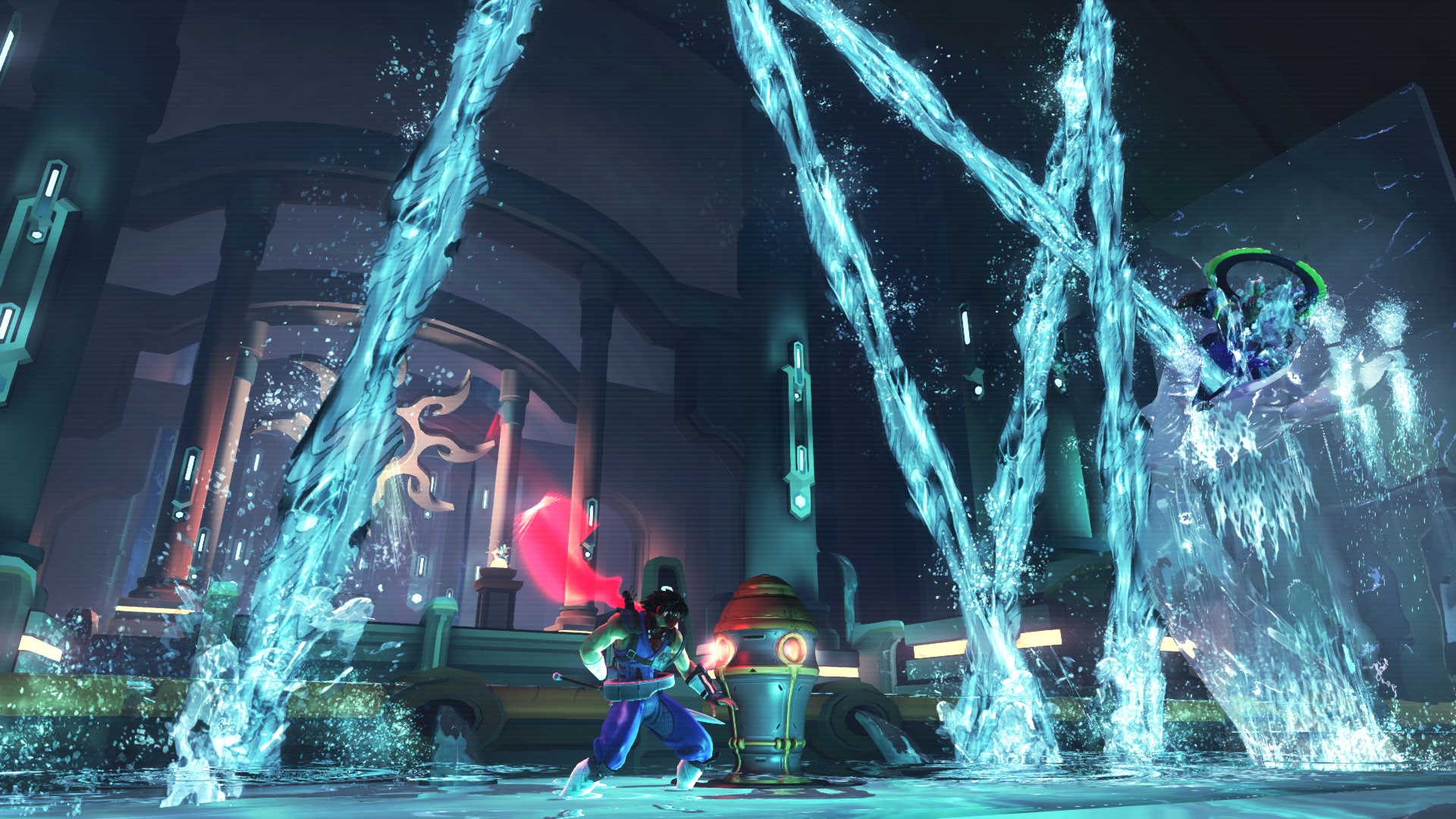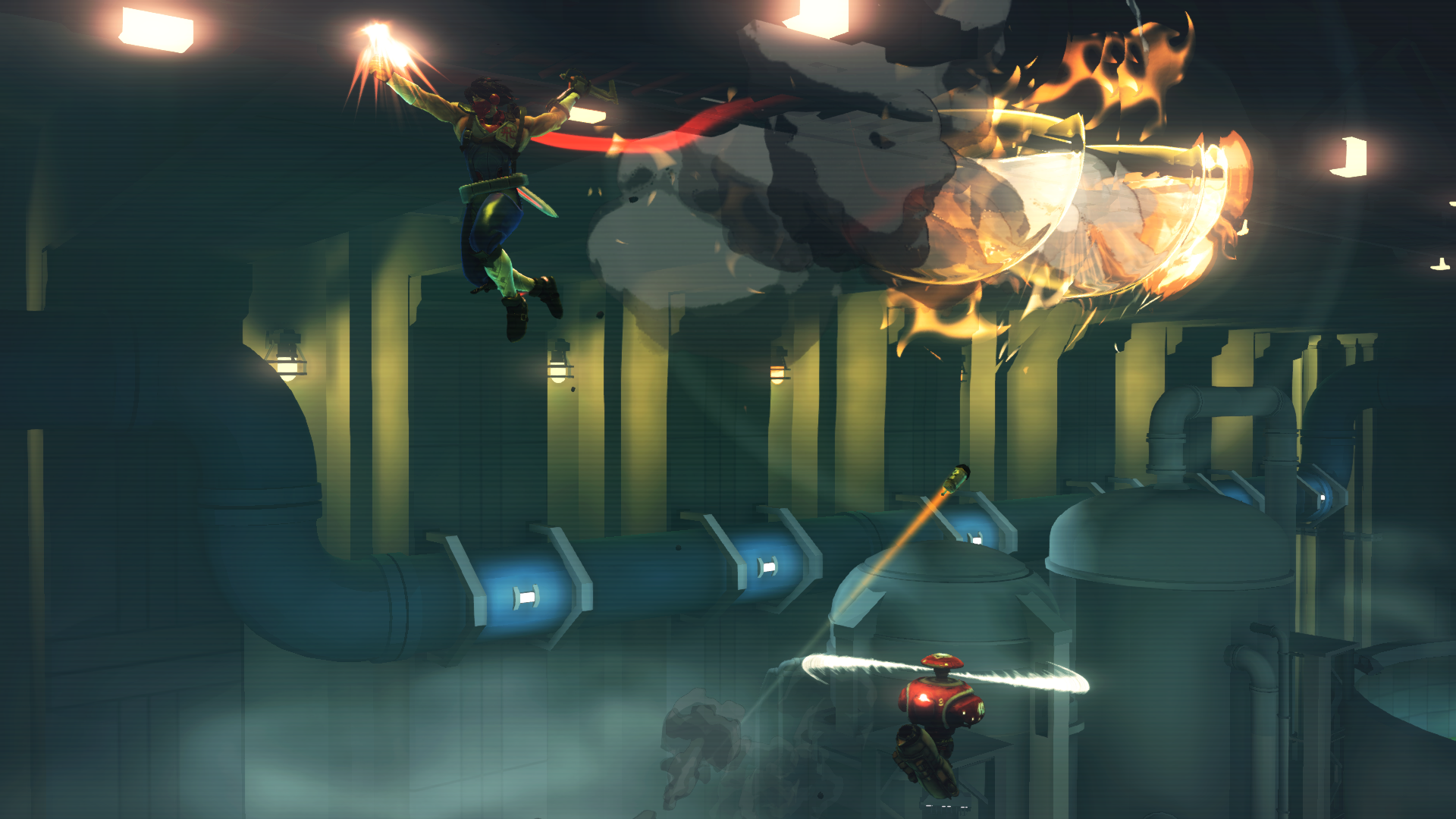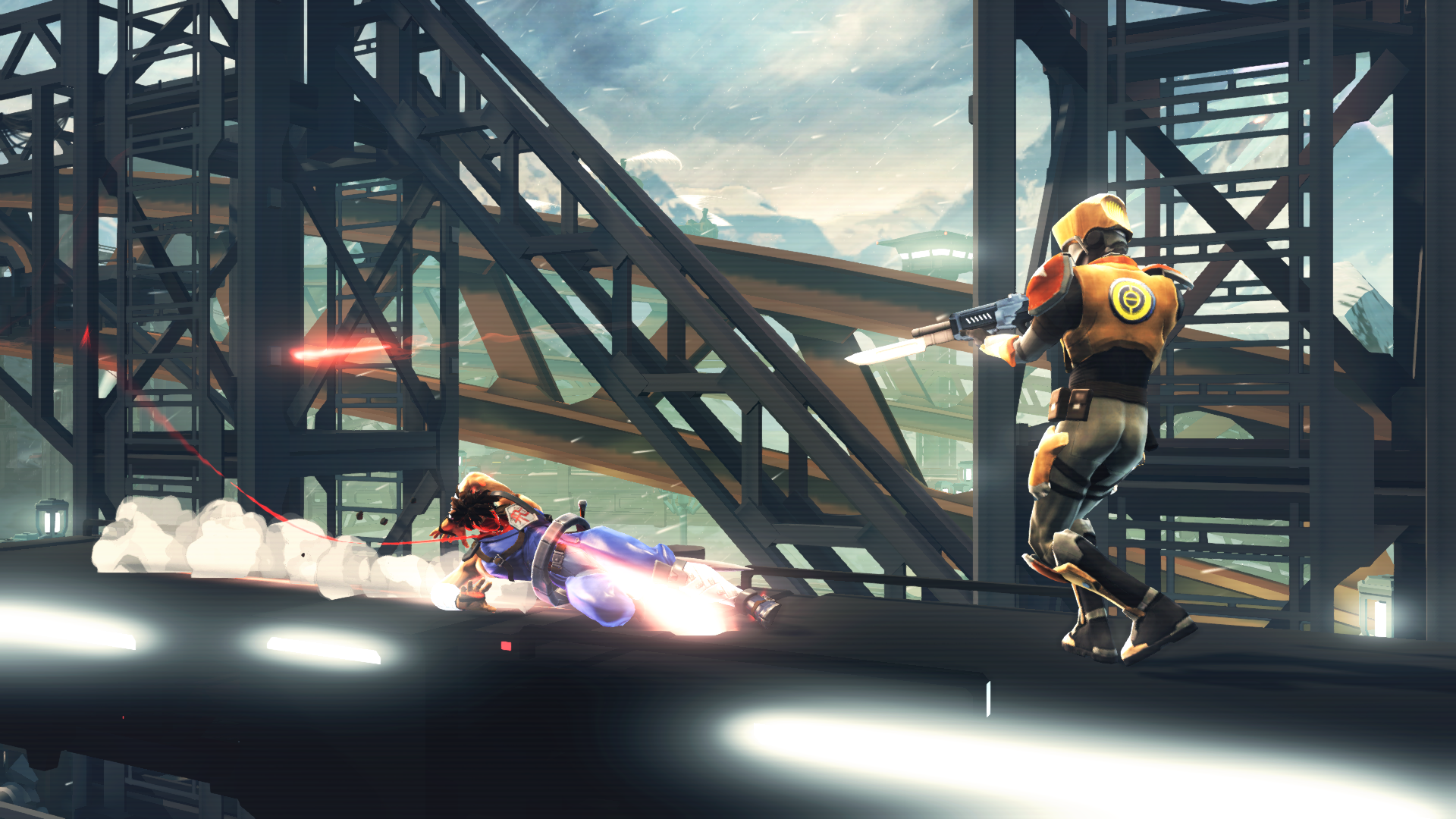It’s always a fun surprise when a series that has been absent for decades suddenly starts getting some attention. A Strider reboot was in development by Grin in 2009, but financial troubles caused the company to go bankrupt and the game was buried before completion. Of course nothing ever stays dead. During Comic-Con in San Diego, Capcom announced a new Strider game. Coming off from reviving the long dormant Killer Instinct series, it seemed like if anyone could breathe new life into a game it would be developer Double Helix Games.
Knowledge of any previous Strider game is not required as this entry seems to be a retelling of the original. Like in the original, you play as Hiryu who is a member of ninja secret agents known as Striders. From the start of the game you find Hiryu hand-gliding his way down into the Kazakh City and from there you’re quickly thrown right into it. That’s right, there’s no prologue or quick set-up. You touch down and immediately receive your orders: Eliminate Grandmaster Meio. The story is kept simple but of course getting from point A to B is a different story.
Much of the gameplay takes elements from the original Strider, but at it’s core this is a “Metroidvania” style of game. It’s a game all about earning abilities and equipment that allow you to return to previous areas that were not available due to a lack of upgrade/ability. Backtracking is the name of the game. Every blocked path is color coded on your map so there’s never any confusion on what upgrade is needed to get through. Most of the stuff you’ll find from revisiting old areas are upgrades to your health, energy meter and of course hidden collectibles that unlock character models/bios and even some time attack challenges. Major gear upgrades are all earned after besting a boss and advancing further in the game.
Exploration aside, Strider does feature a heavy emphasis on combat and most of the gear you get starts to come in handy for other than just opening up locked areas. Early portions of the game are mostly mind numbing button mashing. They’ll throw in enemies that aren’t just fodder into the mix as you start to gaining access to new gear. Shielded enemies appear early on that can be taken down with your charged attack upgrade, you have your typical giant armored enemies that are easily felled by double jumping over and attacking when their back is turned. Even turrets don’t stand a chance once your cypher (Strider’s weapon) is upgraded to reflect bullets. This also works against enemy gunfire, although they can be taken out pretty effortlessly. It should be noted that my time with Strider was spent playing on normal difficulty, which of course could explain why most of the time I just hacked and slashed my way through the majority of the game. But after a quick experiment with the hard difficulty, it seemed like the only change is an increase in damage taken from enemies.
There’s something to be said with Strider’s visuals. While it’s not pushing next-gen hardware to its limits, it still looks great and it even runs at a solid 1080p/60fps. Some of the areas can come across as repetitive looking but that’s mostly due to how large some of the levels can get and mostly just a nit-pick. You’re also navigating your way via the map so you never really get lost. Most of the character models are really well done and look great from a distance but during some of the in-game cutscenes where the game zooms in they don’t look as great. Strider Hiryu’s model in particular really stands out, in a good way. Anyone who knows who Strider is will be able to to recognize him immediately. The only new thing to him is that his scarf has now gone digital! It even changes colors to match your current cypher element.
There’s a small amount of dialogue during some of the in-game cutscenes and even during some portions of early part of Kazakh City; large amounts of propaganda being repeated just in case you missed it. It seemed like the game could have been fine with just text dialogue as the majority of the voiced dialogue is pretty comical, almost as much as figuring out the easily obvious attack patterns of every boss fight. The best part is that should you die during a boss fight you’re forced into hearing the same dialogue you just heard before you engaged. The soundtrack is comprised of old classic Strider tracks remixed to give it a classic yet modern sound.
There are many things Strider does right but when you’ve reached the end of Hiryu’s journey you’re left with this feeling like it could have been so much more. If some of the combat was a little more challenging and enemy encounters actually seemed worth the time, the end result would have been a little more enjoyable. Getting to the end will take you around 5 hours at the least, which is the sweet spot for a game of this genre. Any Metroid, Castlevania, and most recently, Shadow Complex fans will find a good time with Strider. At $15 it’s definitely worth checking out and retiring your old NES Strider cartridge.
This review was based on a digital review copy of Strider for the Xbox One provided by Capcom.
Discover more from The Koalition
Subscribe to get the latest posts sent to your email.



